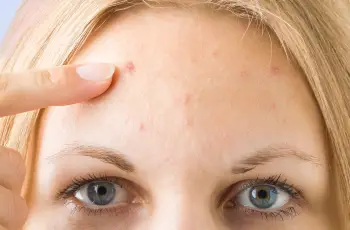
Niacinamide, also known as vitamin B3, is one of the most popular ingredients in skincare and is often considered a “must-have” in TikTok skincare routines. And for good reason: The brightener can help eliminate dark spots and redness while reducing the appearance of fine lines and wrinkles. 1
But is this popular ingredient good for acne? We asked board-certified dermatologists Marisa Garshick, MD, and Jessie Cheung, MD, to give us the latest on niacinamide for acne. Read her thoughts below.
What is Niacinamide?
“Niacinamide, also known as vitamin B3, is a water-soluble vitamin that has many different benefits for the skin,” explains Garshick. “Niacinamide has become increasingly popular because it’s a versatile ingredient that is a great choice in its own right to address skin care concerns like discoloration and redness while being gentle on the skin.”
The ingredient promotes the production of ceramides in the skin; this is essential for maintaining barrier function. This barrier helps keep the skin hydrated and protected from environmental stressors like pollution and UV radiation. Additionally, niacinamide has anti-inflammatory properties that can soothe skin redness and irritation. 2
Does it work for acne?
Yes, niacinamide can help treat acne, Cheung tells us. “Niacinamide can treat acne and balance oil production while shrinking pores,” she explains. “Niacinamide can help even out skin tone and improve the appearance of hyperpigmentation and dark spots,” Garshick adds.
Incorporate into your routine
If you’re considering adding niacinamide to your skincare routine, there are a few things you should keep in mind. Here are some tips to get you started:
Patch test: Before using a new product or ingredient, it’s always a good idea to test it on a small area of your skin. Here’s how to find out if you’re allergic or sensitive to niacinamide.
Start with a small dose: If your skin is sensitive to niacinamide, Cheung recommends starting with a lower concentration. “The safest level is between 2% and 5%, and even up to 10% if your skin can tolerate it,” she explains.
Choose the right product: Niacinamide is found in a variety of skincare products, including serums, moisturizers, toners, and even spot treatments. Consider your skin type and specific concerns when choosing the most appropriate formula.
Don’t overdo it: More isn’t always better. Using more niacinamide than you need won’t necessarily yield faster or better results. Stick to the recommended usage and give the ingredient time to work its magic.
Be patient: As with any ingredient in skincare, results may not be immediately apparent. Give yourself some time to notice changes in your skin, as results can vary based on individual factors. Consistency is key.
When it comes to products, Garshick has a few favorites. “TruSkin Niacinamide Serum improves discoloration without irritating the skin. It doesn’t leave you feeling greasy,” she tells us. “MaeLove’s NIA 10 Serum is especially good for those with sensitive, inflamed, dry, or acne-prone skin. This soothing serum contains niacinamide (vitamin B3), zinc, and white tea extract to help reduce redness and soothe skin.” Chenug likes ISDIN’s Melaclear Advanced, which “combines niacinamide with tranexamic acid and licorice root extract to target unwanted dark spots, including treating melasma.”
Potential Side Effects and Precautions
Before adding niacinamide to the mix, be aware of the other ingredients in your routine. “Avoid using niacinamide and AHAs or BHAs at the same time, as niacinamide’s high pH can interfere with the absorption of these acids,” says Cheung. However, there are many ingredients that work well with niacinamide. “It can be combined with ingredients like kojic acid, arbutin, or tranexamic acid to support pigmentation, or with other ingredients commonly found in moisturizers, such as ceramides and hyaluronic acid,” Garshick tells us.
As mentioned above, higher concentrations of niacinamide can cause sensitivity or irritation.
Conclusion
Niacinamide is a form of vitamin B3 that has many benefits for the skin, including reducing the appearance of acne and acne scars. If you’re looking for an easy way to improve the health and appearance of acne-prone skin, consider incorporating niacinamide into your daily routine. This multifunctional ingredient has powerful brightening and protective benefits, making it a valuable addition to many daily regimens.


